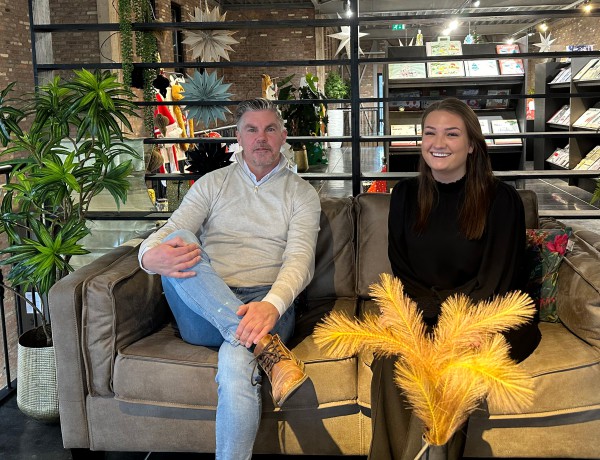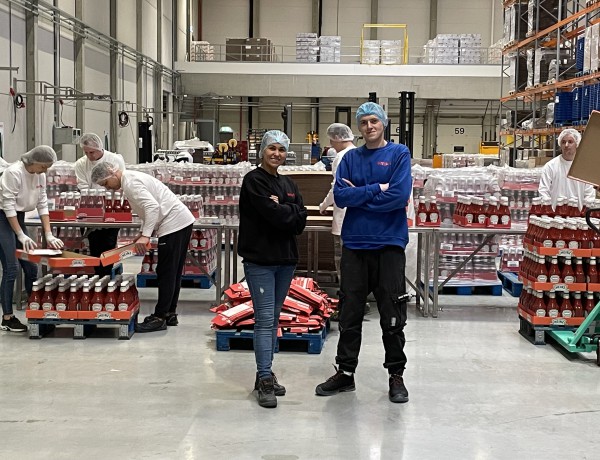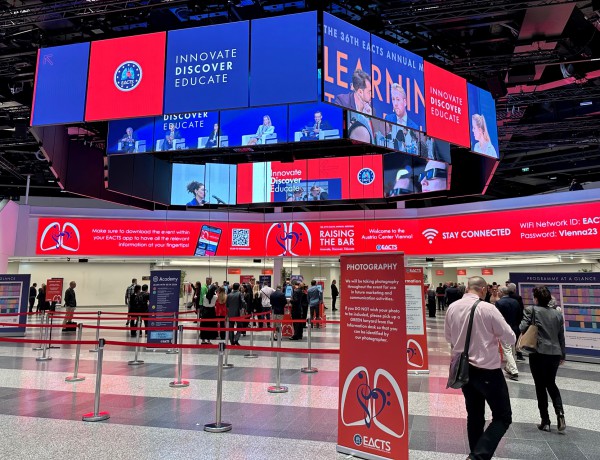The Vetipak site in Zeewolde is home to our successful long-term partnership with Bakker Logistics, part of the STEF group. It’s also where we work for Dynamic Products Factory, which develops creative products for the retail sector. We recently ensured that a multitude of party items in 3,300 displays reached their destinations with a well-known German retail chain. We joined forces to run the whole process from A to Z for D.P. Factory.
Navigating the ‘jungle of sustainability’ - Part 2: Mark van der Burgt, CCO, Vetipak
Manufacturers, packaging companies, retailers, governments and consumers... we all struggle to meet the challenges of sustainability. Things need to improve – that much is clear. But how? We set out to find answers in the ‘jungle of sustainability’.
In the second part of this series, we talk to Mark van der Burgt, Vetipak’s Chief Commercial Officer. He would like to see clients and packaging partners get together at an earlier stage to discuss the opportunities provided by sustainable solutions.
‘Jungle of sustainability’ – a key catchphrase at Vetipak – refers to the uncertainty companies can encounter in their quest to use the most sustainable possible packaging methods and materials. It turns out this has been a source of frustration to Mark for some time:
“Even if you make every effort to do things ‘right,’ you’re still not always sure you actually are,” he explains. When it comes to sustainable packaging, there’s really no such thing as ’the truth,’ since there are always dissenting opinions or some research study proving the opposite. While that does bother me to some extent, we also see it as a challenge to lay the groundwork ourselves and lead the way for our clients.”
“We want the subject to become
much more of a priority”
Five-Perspective Model
Mark believes a good place to start is the Five-Perspective Model developed by the KennisInstituut Duurzaam Verpakken (KIDV, the Research Institute for Sustainable Packaging). “Even though we don’t use it on a daily basis, it does demonstrate that there are so many different ways of looking at sustainability and what a complex issue it is for that reason. Clients we’re helping to meet their sustainability targets have been very positive in their feedback on this model.”
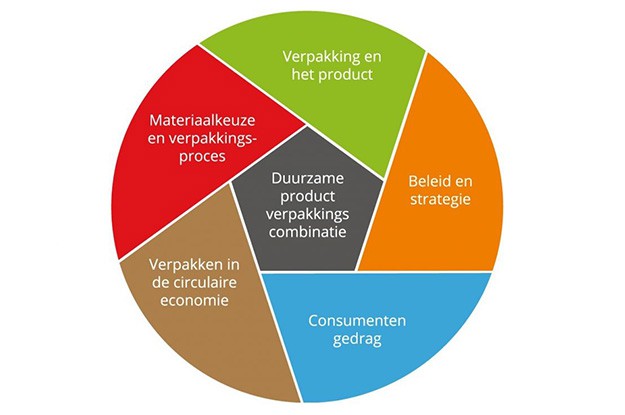
Mark feels the complex nature of sustainability does not release Vetipak and its clients of the responsibility of taking on the challenge. “On the contrary,” he says passionately. “Chris expressed this very well in the previous blog post: the public has given us a license to operate, which means we need to assume our share of responsibility. That was very much the rationale behind this series of blog posts, for example: we want the subject to become much more of a priority.”
Privilege comes with responsibility
But what efforts has Vetipak itself made in recent years to promote sustainability? They say that with great privilege comes great responsibility. Mark: “That’s right, and we’ve been involved in plenty of projects, some successful and some less so.”
“Something we did that was successful from a technical point of view was the introduction of paper PE seven years ago. However, that solution never really caught on commercially. The main barrier was the price, which was between 20 and 25 per cent above the market average.” There were also some sustainability issues: “At the end of the day it was another laminate solution, which made it hard to recycle.”
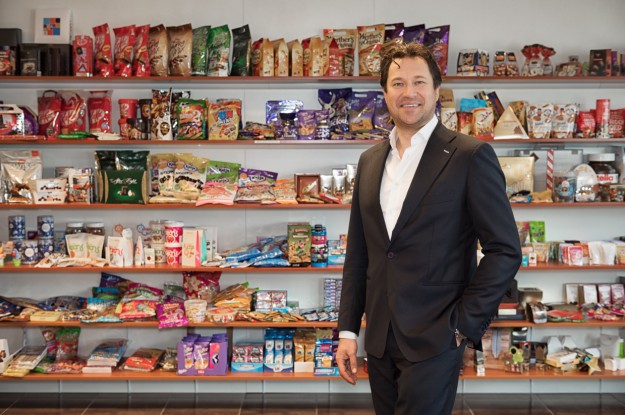
“We may learn even more from our mistakes
than from our successes”
Different mindset
Yet Mark reports being satisfied with this first step: “It set something in motion: a learning process that will likely never end. And once we sink our teeth into something at this company, we don’t easily let go.”
This was followed in the next few years by numerous research studies and experiments. For example, all the company’s machinery is equipped for the production of mono-materials now, and the use of mono-packaging has grown sharply relative to laminates. “I should add that this is not just the result of advances in technology, but also of a change in mindset, although the two are obviously interdependent and interrelated,” Mark says.
Breakthrough
An important breakthrough occurred last year, when Vetipak launched five fully recyclable paper mono-packaging types. “For the sealing, we used – for the first time – a thermo-sealable, plastic-free varnish. Basically, those types of packaging are the result of that very first step we took seven years ago. It’s at those times that you realize we may learn even more from our mistakes than from our successes.”
Mark also highlights the importance of collaboration: “We owe this solution to our strategic partnership with Packaging Partners. We’ve never stopped looking around, and while it’s not something we were involved in on a daily basis, the issue has always remained a priority for us. When Gerosa Group – one of Europe’s leading manufacturers of printed flexible packaging foils – got on board through Packaging Partners, things really began to take off.”
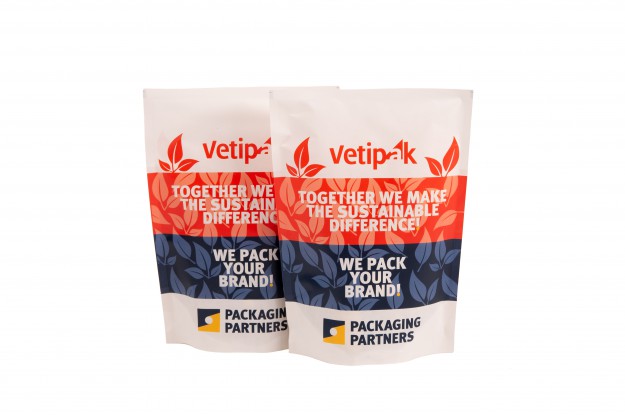
Paper versus plastic
Like Chris, Mark takes a moderate view when it comes to the battle between paper and plastic. Mark: “There is no ‘best option’ between those two – there’s only a best option for each individual situation.” As an example, he cites the inlay for a gift set created by Vetipak:
“Together with the client, we analyzed the difference between paper foam and RPET. While it might seem that paper foam is the most sustainable option of the two because it’s fully biodegradable, when you look at the lifecycle analysis for RPET – which is, of course, already recycled (this is what the ‘R’ stands for in the acronym) – you see there really isn’t all that much of a difference at all. You see, an RPET inlay can be recycled around 11 times altogether. So, you tell me: what is the best alternative? You need to carefully assess all the pros and cons together, and in this case it was the look and feel of the eco-based solution that won the client over. After all, the message your packaging communicates is also an important factor.”
“It’s really time to ditch
all that oversized packaging!”
Early negotiations
Next, we get to the topic of what Mark calls his ‘gospel’: collaboration. “I prefer to team up at the earliest possible stage of the process. As Chris said in the last blog: ‘The packaging company and the manufacturer need to pool their resources by doing research together, setting a strategy, making choices, and so on...’ It all begins with the production process, for each separate piece of packaging.”
But, as the CCO explains, these don’t necessarily need to be innovations related to materials. An experiment carried out by Vetipak and one of Europe’s largest food producers, for example, has cut the use of materials by 30 per cent by reducing the rigidity of the material from 130 mu to 90 mu, while still preserving all its properties.
Mark adds: “But let’s have a look at the model developed by KIDV. There are many other areas that could be improved as well. For one, it’s really time to ditch all that oversized packaging! This will not only cost you more material for your packaging, but also for the outer packaging. And then there’s all the transport involved... If we take a critical look at all that from day one, we can really score some easy wins together. I believe now is a good time for that.”
Blogseries
This blog is part of our Navigating the ‘jungle of sustainability’-series. Please read the other blogs:
